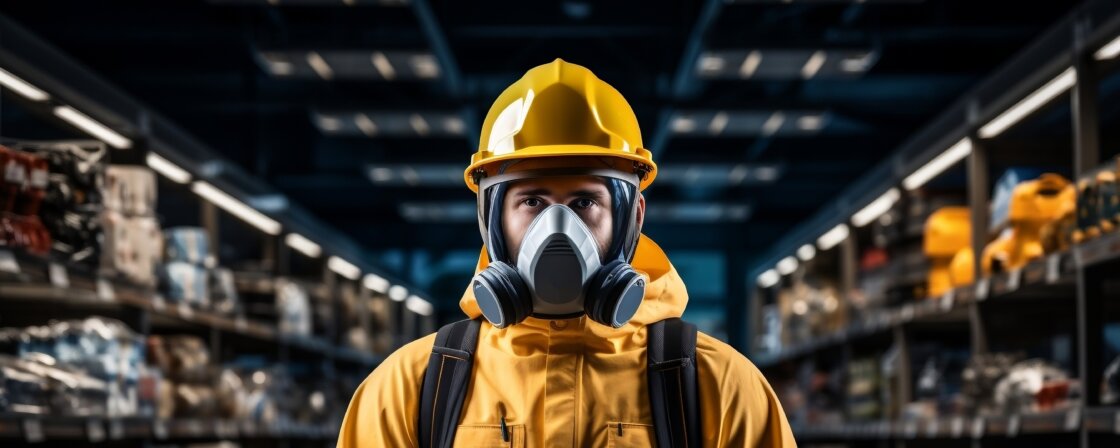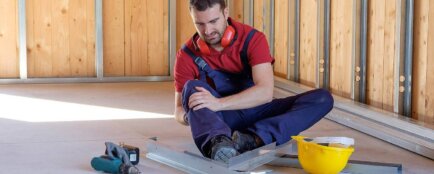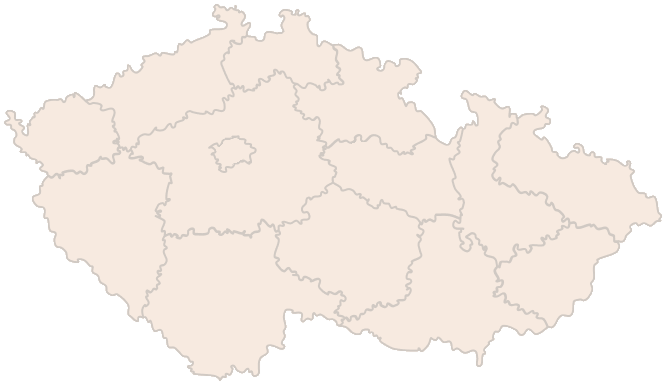Personal protective equipment – what the legislation says
The Labour Code defines personal protective equipment as follows: “Personal protective equipment is protective equipment which must protect employees against risks, must not endanger their health, must not hinder the performance of their work and must meet the requirements laid down by a directly applicable European Union regulation.”
The latter stipulates that such equipment may only be used for its intended purpose and when properly maintained. They must also not endanger the health or safety of persons, domestic animals or property. In addition, they must meet certain standards. These include, for example, the need for ergonomics, safety of materials, comfort, lightness and strength.
The law places a duty on employers to ensure the health and safety of their employees at work. This obligation applies not only to employees but to all persons who are present in the workplace. This includes, for example, visitors from the management, members of excursions and so on. It is also important that these obligations do not only apply to the employer, but also to employees in managerial positions who have responsibility for the health and safety of subordinate employees.
Tip for article
Tip: Are you planning to hire employees? Employment laws can be complex and sometimes a small deviation from them can cause big problems later on. We can help you navigate them and set up an employment contract in accordance with the law.
It is important to note that all costs associated with occupational health and safety must be borne by the employer and must not be passed on directly or indirectly to the employer. So they must not order you to pay for your protective equipment, nor must they automatically deduct it from your salary.
In addition, your employer must provide you with washing, cleaning and disinfecting products and, in some cases where employees work in poor microclimatic conditions (e.g. when you work in hot weather or in winter), ‘protective drinks’. A protective drink is not ordinary water, but a drink that protects against heat or cold. It should be natural mineral or spring water that can replace the loss of minerals. In addition, the law also stipulates that the protective drink must not contain more than 6.5% sugar and 1% alcohol (for underage workers, it must not contain any alcohol at all).
As an employee, you are obliged to use the protective equipment and notify your employer if it is damaged, lost, etc. So that the employer has the opportunity to repair or replace them.
Tip for article
Tip: The term “Occupational Health and Safety” (OHS) covers a wide range of issues and rules. Many employers and employees see these areas as a necessary evil and a formality. However, this can change in the event of a serious accident, an inspection by a labour inspectorate or an employment dispute. So how can you prepare yourself so that you as an employer are not caught off guard by these events? Find out in our next article.
What belongs to protective work equipment
- Head protection: e.g. helmets to protect the head from falling objects, electrical hazards and impacts.
- Eye and face protection: Goggles that protect the eyes from flying debris, fumes, dust and liquid chemicals or face shields that protect the entire face from splashes, sparks and chemicals.
- Hearing protection: earplugs or special earmuffs.
- Respiratory protection: dust masks that protect against inhalation of dust, pollen and other particles or respirators that provide protection from airborne contaminants, including gases and fumes.
- Hand protection: Different types of gloves to protect against cuts, abrasions, chemicals and temperature extremes.
- Fall protection: Safety harnesses and ropes to prevent falls from heights and commonly used in construction and work on elevated sites.
Work clothing and boots – what the legislation says
The Labour Code states that “In an environment where clothing or footwear is subject to extraordinary wear or contamination at work or performs a protective function, the employee is also entitled to work clothing or footwear from the employer as personal protective equipment.” In this case, therefore, workwear and footwear are regarded in the same way as protective equipment and the same rules as those set out above apply. They must therefore be provided by your employer and they must not ask you to pay for them or deduct them from your salary.
Work clothing is an essential part of work protection in a wide range of occupations. It not only serves to protect against the dirt and wear and tear of normal clothing, but often has a hygiene or safety function. Typical examples are medical workwear, which prevents the spread of infections, or reflective workwear, which ensures the visibility of the employee when working in hazardous environments.
Work boots must always be chosen with regard to the specific work environment. The Labour Code clearly states that if footwear has a protective function, it is protective work equipment and is paid for by the employer. Safety work footwear is nowadays produced in many styles, from the classic sturdy boots to lighter work shoes, sandals or slippers, which are suitable for workplaces where all-day walking and attention to hygiene are required.
Tip for article
Tip: If you have been terminated by your employer in any way, we will protect all your rights. With us, you can be sure that you will not be shortchanged.
What clothing and footwear are protective equipment
Whether work clothing and footwear is considered personal protective equipment at work is assessed on the basis of whether it is worn, soiled or has a protective function. The Labour Code does not specify exactly what constitutes wear and tear or soiling. In practice, however, it is usually assumed that workwear is considered to be personal protective equipment if it is no longer usable after one year of use and does not fulfil its purpose.
This may be the case, for example, with clothing and footwear worn in dirty workshops where it becomes dirty and worn out quickly. In addition, it is also customary for the employer to reimburse employees for the cost of clothing and footwear for hygiene or technological reasons. This would include, for example, workwear and footwear for cooks and people working in the food industry. If your employer requires you to wear uniforms, they will usually also contribute towards them or provide them free of charge. However, if you have your own special workwear that is not protective equipment, then you must pay for it yourself.
Are you solving a similar problem?
Need some advice?
Do you think you have the right to have your work clothes paid for by your employer, but your employer refuses? Ask an Affordable Advocate. You will receive a detailed description of what you are entitled to.
I want advice
- When you order, you know what you will get and how much it will cost.
- We handle everything online or in person at one of our 6 offices.
- We handle 8 out of 10 requests within 2 working days.
- We have specialists for every field of law.
What occupations have work clothing, footwear and protective equipment
- Labourers and people working on construction sites: These workers usually wear reflective workwear, helmets, steel- or plastic-toed work boots and work gloves to protect themselves from falling objects, machinery and other hazards on construction sites and in workshops.
- Paramedics: Health care workers wear medical white work clothes. In addition, they also wear white medical shoes. These should be breathable and orthopaedic – so you will often see open-toed sandals or slippers. Clothing and footwear are designed both to keep clean and prevent the spread of infection, but also to ensure all-day comfort. In addition, healthcare workers may also wear personal protective equipment such as gloves, masks and gowns in certain situations.
- Electricians: electricians often wear fire-resistant clothing, insulated gloves and safety glasses to protect themselves from electrocution and burns.
- Chemical and laboratory workers: Workers in laboratories or industries dealing with hazardous chemicals wear special protective clothing such as lab coats, goggles, and gloves to minimize exposure to chemicals.
- Cooks: Kitchen employees typically wear white work clothes and white non-slip work boots to prevent burns, cuts and slips.
- Farmers and agricultural workers: Those who work in agriculture may wear specific clothing such as overalls, hats and waterproof work boots to protect themselves from exposure to pesticides, the sun and other elements.
- Welders: Welders wear flame-resistant clothing, welding hoods and gloves to protect themselves from sparks, heat and UV radiation during welding.
Summary
Under the Labour Code, the employer is obliged to ensure occupational safety and health and must therefore provide employees with work clothing, work boots and protective work equipment free of charge whenever there is a risk to health, excessive wear and tear or soiling of clothing, or hygienic or technological protection is required. This category includes, for example, work boots with steel or plastic toe caps to protect the feet, slip-resistant or waterproof work boots for cooks or agricultural workers, orthopaedic or medical work boots for workers under long-term stress, as well as reflective workwear or medical uniforms. In addition, the employer also provides washing and disinfecting agents and, in certain circumstances, protective drinks, the cost of which must never be passed on to the employee. Employees themselves are then obliged to use the equipment and clothing provided properly and to report any damage or loss.
Frequently Asked Questions
Who pays for work clothes, work boots and protective work equipment?
All work clothing, work boots and other protective work equipment must be paid for by the employer if they perform a protective or hygienic function or if they become excessively worn or soiled. The employer must not pass on these costs to the employee, either directly or indirectly.
What is the difference between regular work boots and safety work boots?
Normal work footwear is mainly used to protect clothing and ensure hygiene, while safety footwear provides active protection for the employee’s health. These may include steel-toed work boots or plastic-toed work boots that protect the toes from injury. Cooks use slip-resistant work boots, while healthcare workers use white slip-resistant work boots or orthopaedic work boots for all-day comfort.
Does protective equipment include special work footwear such as sandals or slippers?
Yes, if they have a protective function, sandals or slippers are also classed as protective work equipment. They are mainly used in hygiene-intensive operations where easy maintenance, breathability and comfort in long-term wear are important.
What types of workwear and footwear are used in different professions?
Each profession has its own specifics: construction workers wear reflective workwear and safety work boots with protection against falling or crushing, medical workers use medical workwear and medical work boots with an emphasis on hygiene and orthopaedic properties, chefs need chef work boots with non-slip soles and easy washability. Waterproof work boots are used in agriculture and breathable or open work boots in hot environments.
How is it assessed whether workwear or footwear is covered by compulsory work protection?
It is crucial whether the workwear or footwear protects the employee from hazards, wear and tear or hygiene problems. If it does, it is protective work equipment and the employer must provide it free of charge. This category includes, for example, reflective workwear, white non-slip work boots, orthopaedic work boots, as well as special models such as non-slip, waterproof or breathable work boots.




